rit colorstay dye fixative instructions

Rit ColorStay Dye Fixative: A Comprehensive Guide
Rit ColorStay isn’t effective with Procion MX dyes‚ commonly found in Tulip kits‚ as they’re already quite permanent. It’s designed for Rit All-Purpose Dye‚ which bonds weakly;
Understanding Rit ColorStay Dye Fixative
Rit ColorStay Dye Fixative is primarily formulated to enhance the wash fastness of dyes‚ particularly those within the Rit All-Purpose Dye range. However‚ it’s crucial to understand its limitations; it won’t significantly improve the permanence of Procion MX dyes‚ which are already known for their robust bonding to plant-based fibers like cotton. These dyes‚ often found in kits like Tulip‚ require thorough rinsing to remove excess dye – a process that doesn’t indicate improper setting.
The fixative works by forming a complex with the dye molecules‚ helping them resist release during washing. Despite this‚ a trade-off exists: while ColorStay boosts wash fastness‚ it can potentially reduce light fastness‚ making it less ideal for items frequently exposed to sunlight. It’s important to note that even with ColorStay‚ direct dyes still carry a risk of rub-off.
For optimal results‚ always pre-wash fabrics to remove sizing and finishes. Consider fabric composition and coatings‚ as these can hinder dye absorption and permanence. Paula Burch‚ a textile expert‚ provides valuable insights‚ emphasizing the fixative’s specific application to certain dye types.
Dye Types and Compatibility: Procion MX vs. Rit All-Purpose Dye
A fundamental distinction exists between Procion MX dyes and Rit All-Purpose Dye‚ impacting the effectiveness of Rit ColorStay Dye Fixative. Procion MX dyes‚ frequently used in tie-dye and fiber art kits‚ are renowned for their strong covalent bonds with cellulose fibers like cotton‚ resulting in exceptional colorfastness when applied correctly. They require extensive rinsing to eliminate unbound dye‚ but this doesn’t signify a failed dye process; it’s a characteristic of the dye itself.
Conversely‚ Rit All-Purpose Dye relies on weaker bonds‚ making it prone to fading and wash-out over time. Rit ColorStay is specifically designed to improve the wash fastness of these weaker-bonding dyes‚ essentially helping them adhere better to the fabric. However‚ it offers minimal benefit to Procion MX dyes‚ as they already possess superior permanence.
Therefore‚ applying ColorStay to items dyed with Procion MX is largely unnecessary. The auxiliary chemicals and processes effective for one dye class often prove ineffective for another. Understanding this compatibility is crucial for achieving optimal dyeing results and avoiding wasted effort.
The Permanence of Procion MX Dyes
Procion MX dyes stand out for their exceptional permanence on plant-based fibers‚ particularly cotton. Unlike Rit All-Purpose Dye‚ which forms relatively weak bonds‚ Procion MX creates a strong covalent bond with the cellulose molecules within the fabric. This robust connection translates to superior wash fastness and resistance to fading‚ even without the aid of a fixative like Rit ColorStay.
Despite their inherent permanence‚ Procion MX dyes often require thorough rinsing to remove excess‚ unbound dye particles. This extensive rinsing process is a normal part of the dyeing procedure and doesn’t indicate improper dye application or a lack of colorfastness. In fact‚ continuing to rinse until the water runs clear is a recommended practice.
Following rinsing‚ washing in hot water – the hottest your machine allows – further helps eliminate residual dye. Multiple washes may be necessary‚ but this is simply removing leftover dye‚ not the dye itself being released from the fabric. Consequently‚ Rit ColorStay offers little to no discernible improvement in the permanence of Procion MX-dyed items.
Rinsing and Washing Dyed Items: Removing Excess Dye
Successfully removing excess dye after the dyeing process is crucial‚ regardless of the dye type used. For both Procion MX and Rit All-Purpose dyes‚ thorough rinsing is the initial step. Begin with cool water‚ gradually increasing the temperature if needed‚ and continue rinsing until the water runs completely clear. This process eliminates unbound dye molecules that haven’t chemically bonded to the fabric.

Following rinsing‚ washing the dyed item is essential. Utilize the hottest water cycle your washing machine permits‚ paired with a detergent that’s relatively free of additives. Synthrapol is the industry standard for this purpose‚ specifically designed to remove excess dye without compromising colorfastness. Be prepared for multiple wash cycles‚ as it may take several attempts to fully eliminate all traces of unbound dye.
It’s important to note that continued dye release during washing doesn’t necessarily signify improper dye application. It simply indicates the removal of residual dye that wasn’t initially absorbed by the fabric. Rit ColorStay doesn’t significantly alter this process for Procion MX dyes‚ as the primary issue is unbound dye‚ not dye bond strength.
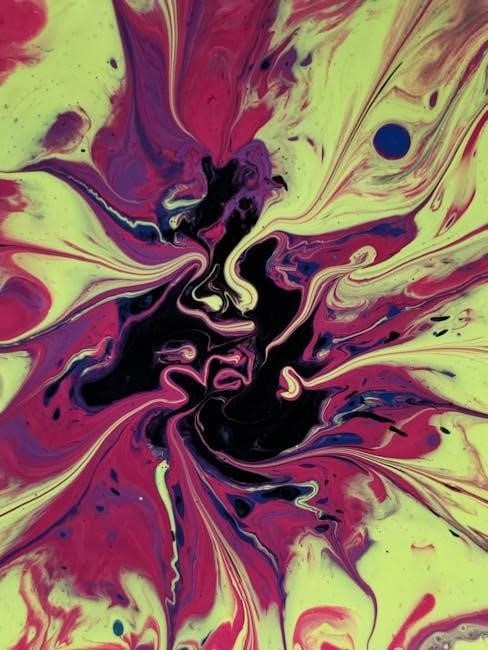
Importance of Water Temperature During Washing
Water temperature plays a pivotal role in effectively removing excess dye from newly dyed fabrics. Utilizing warmer to hotter water during the washing process significantly enhances dye release‚ aiding in the elimination of unbound dye molecules. This is particularly important after using Rit All-Purpose Dye‚ which forms weaker bonds with fibers compared to Procion MX dyes.
However‚ always adhere to the fabric care instructions. While hot water is beneficial for dye removal‚ certain fabrics may shrink or become damaged at higher temperatures. For delicate materials‚ a warm water cycle might be more appropriate‚ potentially requiring additional wash cycles to achieve complete dye removal.
Rit ColorStay‚ while improving wash fastness‚ doesn’t negate the need for thorough initial washing. The fixative primarily strengthens the bond between the dye and the fiber‚ reducing bleeding during subsequent washes‚ but doesn’t prevent the removal of unbound dye during the first few washes. Therefore‚ employing the hottest safe water temperature remains crucial for optimal results‚ especially when dealing with Rit All-Purpose dye.
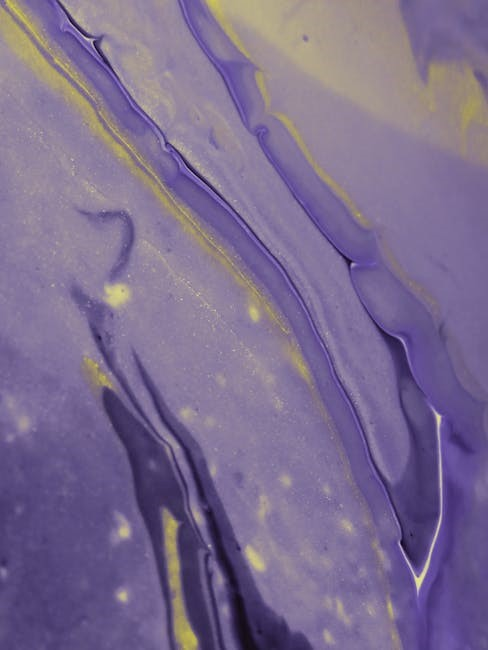
Assessing Fabric Composition: Cotton and Blends

Determining the fabric composition – whether 100% cotton or a blend – is paramount before dyeing and using Rit ColorStay. Procion MX dyes excel on plant-based fibers like cotton‚ achieving excellent permanence with proper application. However‚ blends introduce complexities.
If the fabric is a cotton blend‚ the percentage of cotton dictates dye uptake and the effectiveness of Rit ColorStay. Lower cotton content means less dye absorption and potentially reduced wash fastness‚ even with the fixative. Synthetic fibers within the blend may not accept the dye at all‚ resulting in uneven coloration.
Furthermore‚ assess for durable technical coatings like stain or water repellents. These coatings create a barrier‚ hindering dye penetration and rendering the dyeing process largely ineffective‚ regardless of the dye type or ColorStay’s application. Pre-washing is essential‚ but won’t necessarily overcome a robust coating. Accurate fabric identification is therefore crucial for realistic expectations and successful dyeing outcomes.
Impact of Fabric Coatings on Dyeing
Durable technical coatings on fabrics‚ such as stain or water repellents‚ significantly impede the dyeing process‚ even with Rit ColorStay. These coatings create a barrier that prevents dye molecules from properly penetrating and bonding with the fabric fibers. Consequently‚ dyeing attempts often result in minimal color absorption and poor wash fastness.
The presence of such coatings renders the fabric largely resistant to dye uptake‚ regardless of whether Rit All-Purpose Dye or Procion MX dyes are used. ColorStay‚ designed to improve wash fastness‚ cannot overcome this physical barrier. It’s crucial to identify these coatings before attempting to dye.
Even after pre-washing‚ which is a standard preparation step‚ the coating often remains sufficiently intact to inhibit effective dyeing. Testing water resistance post-wash can reveal if the coating is still present. In essence‚ fabrics with durable coatings are generally unsuitable for dyeing‚ making accurate fabric assessment a vital first step.
Pre-Washing Fabric for Optimal Dyeing
Prior to dyeing‚ thoroughly pre-washing your fabric is essential for achieving optimal results‚ irrespective of whether you’re using Rit All-Purpose Dye or aiming to utilize Rit ColorStay afterward. This process removes sizing‚ oils‚ and other finishes applied during manufacturing that can hinder dye absorption and create uneven coloration.
Use warm to hot water and a detergent with minimal additives. Synthrapol is the industry standard for this purpose‚ as it effectively cleans the fabric without interfering with the dyeing process. Avoid detergents containing fabric softeners or brighteners‚ as these can leave residues that impede dye uptake.
After washing‚ carefully inspect the fabric to ensure all finishes have been removed. A simple water resistance test can reveal if any coatings remain. Proper pre-washing prepares the fabric to receive the dye evenly‚ maximizing color intensity and improving the effectiveness of any subsequent fixative treatment like ColorStay.
Rit All-Purpose Dye: Limitations on Cotton Upholstery

When considering dyeing cotton upholstery‚ Rit All-Purpose Dye presents significant limitations‚ even when paired with Rit ColorStay. Unlike Procion MX dyes‚ which form a strong bond with plant-based fibers‚ Rit All-Purpose relies on weaker‚ direct dye bonds. This means the color is prone to fading and washing out over time‚ making it unsuitable for high-use items like upholstery.
The direct dye component within Rit All-Purpose isn’t inherently permanent‚ and while ColorStay can improve wash fastness‚ it does so at the expense of light fastness. Upholstery receives considerable light exposure‚ potentially leading to noticeable fading. Furthermore‚ direct dyes carry a risk of rubbing off onto clothing or other surfaces.
If the upholstery has a durable technical coating – such as a stain or water repellent – dyeing may be impossible‚ regardless of dye type or fixative. Thorough pre-washing with Synthrapol is crucial‚ but even then‚ permanence remains questionable.
ColorStay and Wash Fastness
Rit ColorStay Dye Fixative primarily aims to enhance wash fastness‚ meaning it helps prevent dye from bleeding or fading during laundering. However‚ it’s crucial to understand its limitations; it doesn’t magically transform a poorly bonded dye into a permanent one. Its effectiveness is most pronounced with Rit All-Purpose Dye‚ which inherently has weaker fiber bonds compared to dyes like Procion MX.
While ColorStay reduces dye loss in the wash‚ it achieves this by altering the dye molecule‚ often at the cost of light fastness. This trade-off means colors may fade more quickly with prolonged exposure to sunlight or bright indoor lighting. The fixative doesn’t improve the initial dye uptake; it simply attempts to lock in what’s already there.
For optimal results‚ thorough rinsing is still essential. Excess dye must be removed before applying ColorStay‚ and multiple washes in hot water with a detergent like Synthrapol may be needed to achieve clarity.
The Trade-off: Light Fastness and ColorStay
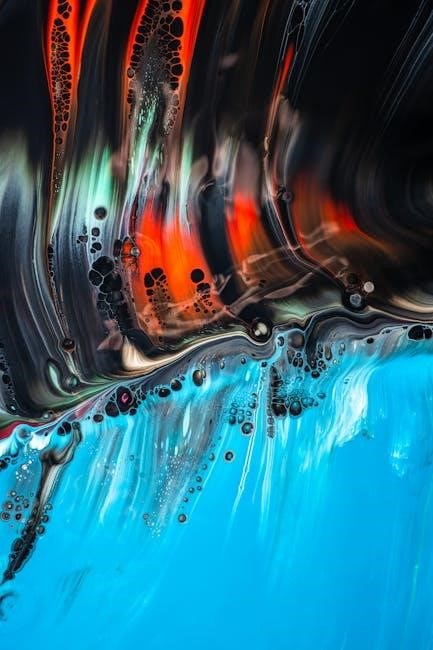
Employing Rit ColorStay Dye Fixative introduces a notable trade-off between wash fastness and light fastness. While it demonstrably improves a dyed item’s resistance to color loss during washing‚ it simultaneously diminishes the color’s ability to withstand prolonged exposure to light. This is a critical consideration‚ particularly for items frequently displayed or used in brightly lit environments.
The fixative alters the dye molecules to enhance their bonding with the fabric‚ but this alteration can make them more susceptible to fading when exposed to UV rays. Essentially‚ ColorStay prioritizes preventing dye from washing out over preserving its vibrancy under light. Therefore‚ it’s less ideal for projects intended for constant sunlight.
Understanding this compromise is vital for informed decision-making. If wash durability is paramount and light exposure is minimal‚ ColorStay is beneficial. However‚ for items needing long-term color retention in bright settings‚ alternative dyeing methods or accepting some initial bleed are preferable.
Direct Dye Rub-Off Concerns
A significant concern with dyes like Rit All-Purpose Dye‚ classified as direct dyes‚ is their propensity for rubbing off onto other surfaces. This occurs because these dyes form relatively weak bonds with fabric fibers‚ leaving excess dye loosely adhered to the material’s surface. Even with the application of Rit ColorStay‚ which enhances wash fastness‚ the risk of dye transfer isn’t entirely eliminated.
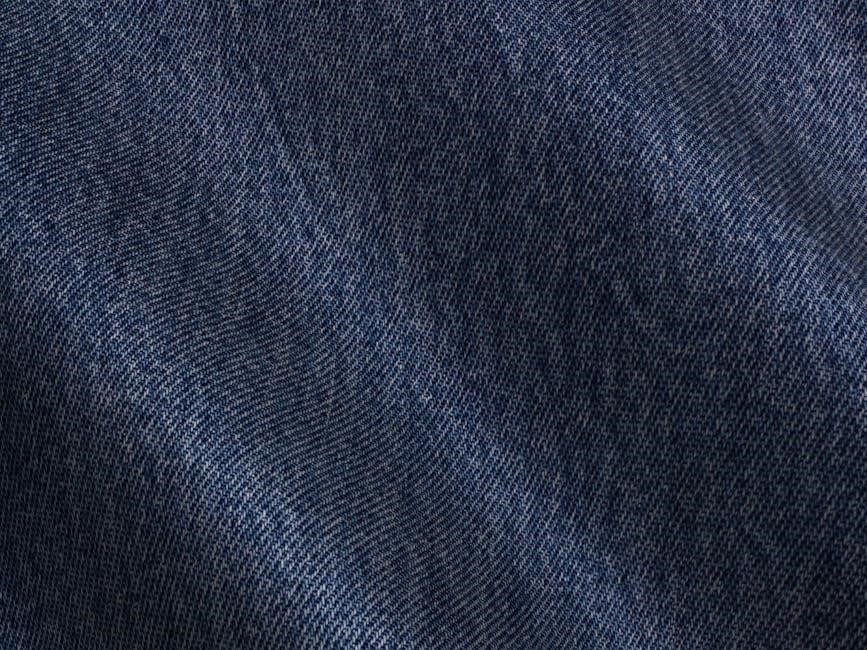
The fixative primarily improves resistance to bleeding during washing‚ not necessarily preventing dye molecules from migrating onto skin‚ furniture‚ or other fabrics through physical contact. This is particularly relevant for newly dyed items or those subjected to frequent handling. Initial rub-off is common‚ even after multiple washes.
To mitigate this issue‚ thorough rinsing post-dyeing is crucial‚ aiming for clear water. However‚ even extensive rinsing doesn’t guarantee complete removal of unbound dye. Therefore‚ caution is advised when using items dyed with direct dyes‚ especially light-colored materials that may readily show dye transfer.
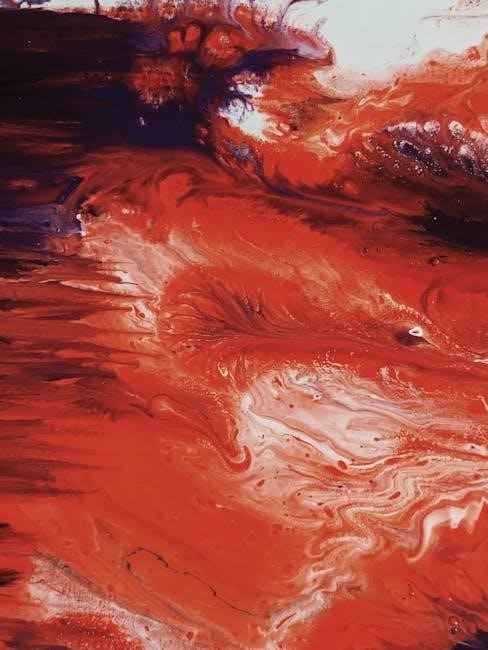
Paula Burch’s Insights on Rit ColorStay
Paula Burch‚ a recognized expert in dyeing and fiber arts‚ offers valuable perspectives on Rit ColorStay Dye Fixative. Her insights‚ often shared on her blog‚ clarify common misconceptions surrounding its effectiveness. Burch emphasizes that ColorStay is primarily designed to improve wash fastness – reducing dye bleed during laundering – rather than fundamentally altering dye permanence.

She specifically addresses the question of whether ColorStay enhances the performance of Procion MX dyes‚ commonly used in Tulip tie-dye kits‚ concluding that it does not. Procion MX dyes‚ when properly applied‚ are already highly wash-fast and don’t significantly benefit from the fixative.
Burch also points out a crucial trade-off: while ColorStay boosts wash fastness‚ it can diminish light fastness. This means dyed items may fade more quickly when exposed to sunlight. Her advice underscores the importance of understanding the specific dye type and desired outcome when deciding whether to use a dye fixative.
Using Synthrapol for Effective Washing
Synthrapol is the recommended detergent for washing dyed fabrics‚ particularly after using dyes like Rit All-Purpose or Procion MX. Unlike many conventional detergents containing optical brighteners or enzymes‚ Synthrapol is formulated to gently remove excess dye without compromising color vibrancy or fabric integrity. It’s crucial for achieving optimal wash fastness‚ even with Rit ColorStay applied.
Before dyeing‚ a warm to hot wash with Synthrapol prepares the fabric by removing sizing‚ oils‚ and other finishes that can hinder dye absorption. Post-dyeing‚ repeated washes with Synthrapol in cool water are essential to eliminate unbound dye molecules. Don’t be alarmed by initially cloudy water; this indicates excess dye being released.
Continue washing until the water runs clear‚ potentially requiring several cycles. Synthrapol’s effectiveness stems from its ability to suspend dye particles‚ preventing them from re-depositing onto the fabric. It’s a vital step‚ regardless of whether ColorStay is used‚ ensuring a beautifully and durably dyed result.